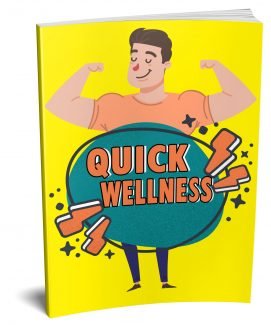Description
Fit exercise into your busy schedule? That’s as absurd as saying that there are eight days in a week. First, you’ve never exercised before or regularly played a sport. Second, you’ve never been into the fitness crowd and third, you’re far too busy to even think about exercise. In other words, You’re just not into it.
Of course, your friends talk about it and rave about the latest fitness craze, but you’ve seen it too often, some of them are on the “on-again-off-again” treadmill/stair master mania, and you wonder why they haven’t shed the fat that they’re desperately still trying to hide. Seeing what your friends go through and not seeing any results, you cling to the notion that your total lack of interest is justified.
You’re not the least bit inclined to engage in these circus-like contortions or do those mindless freestyle strokes in the water. That would only encroach into your already busy schedule of juggling family, home, and career. These three combined – husband/children/work are your exercise.
Before tackling the idea of fitting exercise into your busy schedule, it might be better if we start with the concept of self-assessment and then familiarize ourselves with the disease-prevention aspect of exercise.
Once you’ve accepted the fact that exercise is good for your health, then you can consider some of the ways you can include it in your life.
SECTION 1: ASSESSING PHYSICAL DAMAGE AND ACCEPTING THE IMPORTANCE OF EXERCISE
Lifespan and Physical Appearance
The average life span is 80 years, give or take a few years. The truth is, a significant number of people look and feel 80 before their time. They have:
sagging dry skin unsightly posture an uneven and unsteady walk aching joints
If their outward appearance is bad, imagine what the inside machinery is like. Most likely, it’s even worse:
clogged blood vessels heart problems mounds of sugar and fat parked in or around vital organs Conditions such as diabetes, nervous tension, high blood pressure, and cardiovascular disease that are silently brewing.
If fitness authorities had it their way, they’d create legislation to make exercise mandatory as soon as a baby leaves the cradle, not during the teenage years when obesity is likely to strike.
But fitness shouldn’t be associated with any age. You can start at 10 or at 30 – even at 50 or 60. Fitness should not be seen as the cure for an illness you already have but as preventative maintenance. Assessing Your Fitness Level
Brad King and Dr. Michael Schmidt in “Bio Age, Ten Steps to a Younger You” have devised a questionnaire for assessing physical damage to a body as a result of no exercise. We will borrow some of their guidelines:
Start with the question, “How do I look?” Do any of these answers apply to you?




